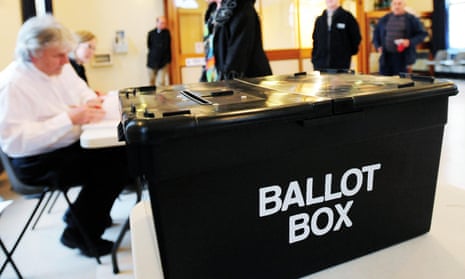New research into May’s general election sheds light on what went wrong with the opinion polls, which notoriously all failed to predict David Cameron’s outright win.
The face-to-face survey of nearly 3,000 adults in 300 constituencies was conducted soon after polling day as part of the British Election Study (BES), and it accurately gauged the Conservative advantage over Labour at about seven percentage points. That is in marked contrast to the final pre-election polls, which predicted a dead heat.
The results of the survey suggest that pre-election polling may have failed to accurately reflect the electorate’s preferences because those interviewed were not selected randomly.
The BES data suggests 40% of British voters had backed the Tories, and that 33% had sided with Labour. The study is not perfect: both these figures are two points up on the actual score that each party achieved. But because the errors run in the same direction, the all-important winning margin is correct – in marked contrast to the final average of the pre-election polls, which suggested the two parties were tied on 34% apiece.
The new study has significant implications for the ongoing British Polling Council postmortem into what went wrong, which is chaired by Prof Patrick Sturgis of Southampton University and is due to report its first findings in January. It is tasked with assessing several competing theories of what went wrong when the most polled election in British history also proved to be the most surprising.
One logical possibility would be a late swing to the Conservatives; another would be that those voters who kept their cards close to their chests during the campaign – saying “don’t know” – broke disproportionately for the Tories on the day. But several polling companies have undertaken “recontact” surveys with the voters from their final pre-election samples to look for such signs of late movement and, Sturgis says, “these exercises have not, in general, pointed to any obvious explanations”. Even after the election, the Conservatives were not as far ahead as they should have been.
This suggests that the BES survey did a better job than all the pre-election phone and online polls of building a genuinely representative sample. Sturgis explains that by using genuinely random sampling, “in which everybody has at least some chance of being asked to take part in the survey”, the BES study sets a gold standard, against which the shortcomings of both telephone and online polling can be judged.
Sturgis says that it is possible for online polling, which draws samples from large panels of volunteers, to be compromised by the way that they collect data. “Not everyone puts themselves forward to take part, and those who do will not be representative”.
Phone polling used to be regarded as less biased, but Sturgis cautions: “Many households are increasingly reluctant to pick up their landline, and a growing proportion of young people in particular rely exclusively on mobile phones”. There is no exhaustive database of mobile numbers to draw on, and there is no consensus among the pollsters on a comprehensive and cost-effective way to factor mobiles into the mix.
Instead of relying on online volunteers or citizens who are happy to talk to strangers on their landline, the BES data is collected – at considerable cost – by going out and knocking on doors. As such it sheds valuable new light on who was undersampled in the pre-election polls.
BES director, Prof Ed Fieldhouse of Manchester University, believes that the most crucial missing group were non-voters, and particularly younger non-voters. “Our data performs well with respect to lower reported turnout,” he says, and also has “a good distribution of age”. As a result, it finds a substantial 43% of the under 30s saying they didn’t vote, whereas among the less representative young people in the pre-election polls, 15% or fewer sometimes identified themselves as non-voters.
BES research fellow Jon Mellon explains: “Opinion pollsters are very good at making their samples reflect the general population. But the general population and the electorate are very different things, because around 40% of adults don’t vote. There are far too many young voters in polling samples, and not enough young non-voters. Because young people tend to be more Labour leaning, this means we end up with too many Labour voters in the polls”.
In the months since the election, the various pollsters have been experimenting with different adjustments that could have brought their final polls into line with the actual result. ComRes, for example, has developed a new turnout model based on socio-economic factors. Meanwhile, Ipsos Mori has been experimenting with using data on how often respondents report having voted in the past as an additional factor in determining how likely they are to vote in the future.

Comments (…)
Sign in or create your Guardian account to join the discussion